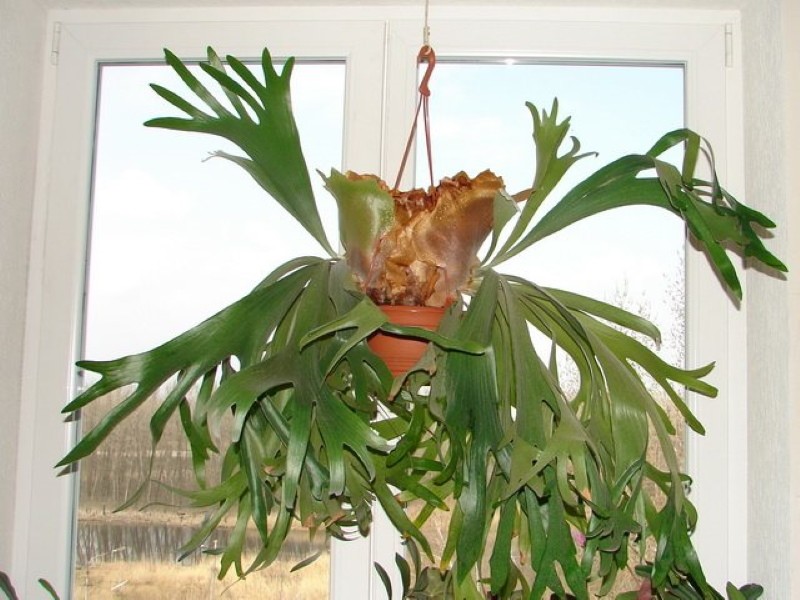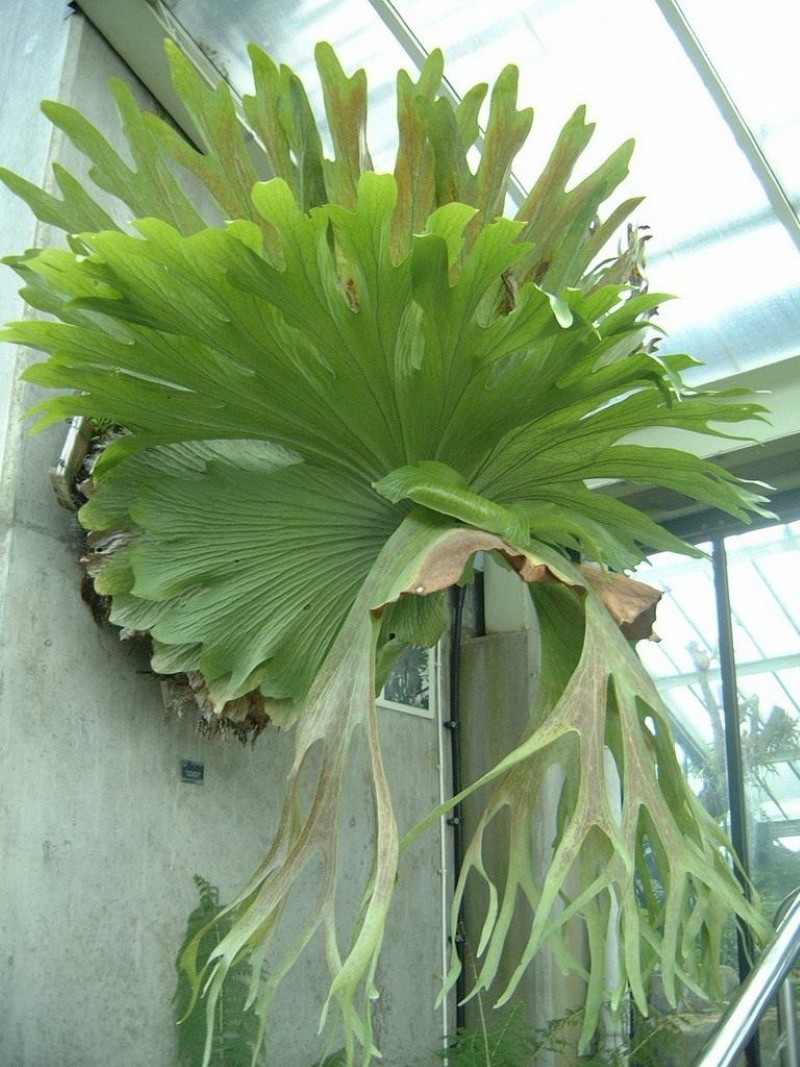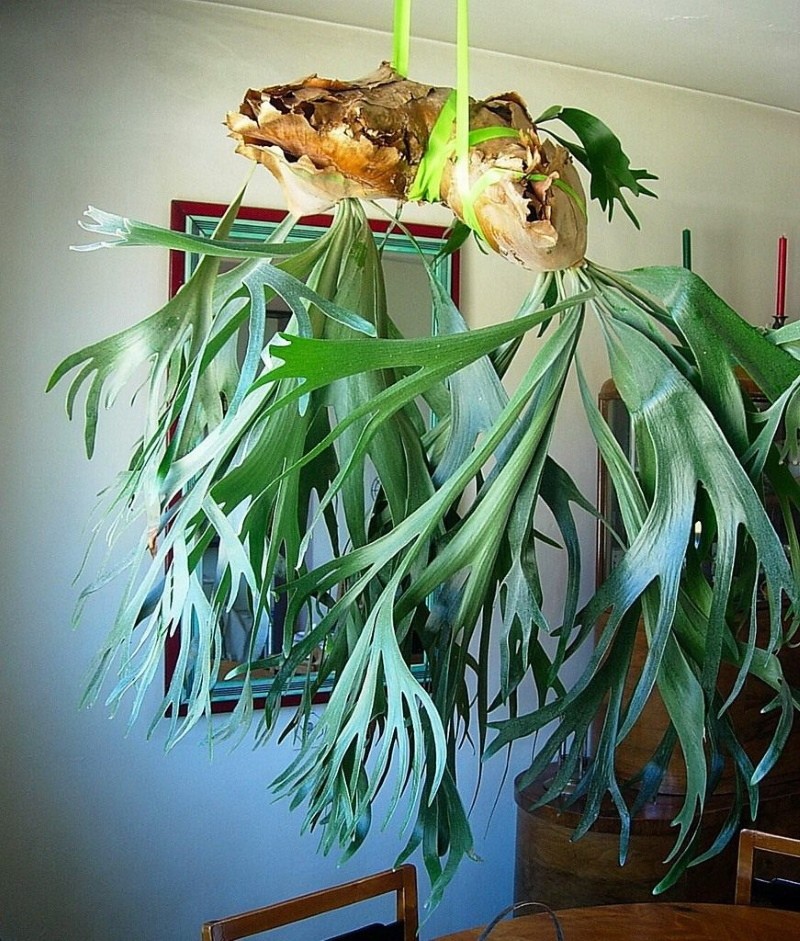And you still do not have deer antlers - Platycerium fern, growing and caring for an unpretentious epiphyte
 Surely, when you mention ferns, you imagine their graceful openwork leaves, flaunting a lush rosette in a pot. Have you seen a similar flower growing upside down? This is not a fiction at all, but the great original and handsome fern Platizerium, the cultivation and care of which is even easier than for garden varieties. He is not picky about moisture, tolerates partial shade well and is content with moderate watering. And although the fern does not grow very quickly, it will leave you admiring the unusual leaves. And last but not least, it is just perfect as a hanging plant. Moreover, in a flowerpot, it will look even more elegant and unusual.
Surely, when you mention ferns, you imagine their graceful openwork leaves, flaunting a lush rosette in a pot. Have you seen a similar flower growing upside down? This is not a fiction at all, but the great original and handsome fern Platizerium, the cultivation and care of which is even easier than for garden varieties. He is not picky about moisture, tolerates partial shade well and is content with moderate watering. And although the fern does not grow very quickly, it will leave you admiring the unusual leaves. And last but not least, it is just perfect as a hanging plant. Moreover, in a flowerpot, it will look even more elegant and unusual.
Fern Platycerium - growing and care at home

A characteristic feature of this fern is that it has two types of wai:
- The wide lower leaves that tightly hug the tree or cover the pot with a hat are sterile. They serve as both a support for the whole plant and a fertilizer for it. The lifespan of such wai is short, they dry quickly, superimpose on each other, decompose and serve as food for the roots.
- The horns themselves, flat carved sheets, are covered with spores, with which the flower reproduces.
Even drying sterile leaves do not think about cutting off. They themselves will die off and turn into humus. Spore-bearing horns can only be cut off if they disappear. By the way, it is for the shape of the wai that the fern is popularly called the deer horn or flathorn.
Requirements of the platiserium for the conditions
 The indoor flathorn prefers moderation in everything. He is more comfortable at + 25 ° C heat than in the heat, and there is enough diffused lighting on the east window. There are no special requirements for air humidity, but the bush will not like too dry and hot flow from a working heating radiator. Then you definitely have to think about a humidifier.
The indoor flathorn prefers moderation in everything. He is more comfortable at + 25 ° C heat than in the heat, and there is enough diffused lighting on the east window. There are no special requirements for air humidity, but the bush will not like too dry and hot flow from a working heating radiator. Then you definitely have to think about a humidifier.
It does not have a pronounced dormant period, but in winter development stops. At this time, you can keep the flower in a cool room, but not below plus 12 ° C.
Now about the most interesting thing - how to plant a fern. Flathorse can grow in a shallow pot (it does not need a large pot due to shallow roots) in a fern substrate. At the same time, it looks very decorative in hanging pots, from which its horns gracefully hang down, as if a wondrous deer bowed its head.You can also plant a fern on wood. Just overlay it first moss and take care of additional fastening. For example, hammer in a couple of studs and secure the bush with twine. You can add some soil under the lower leaves.
Fern Platizerium - growing and caring for deer antlers in a pot
 Caring for the Platyzerium will not take much of your time:
Caring for the Platyzerium will not take much of your time:
- Water it through the pallet no more than twice a week in summer, and in winter it will be enough once every two weeks. Moisten “horns” growing on wood by immersing it in water.
- Fertilize 2 times a month with a weak solution of liquid mineral fertilizers.
- Transplant into a larger pot every 2-3 years, replacing the soil. Change the wood as it "wears out".
The fern does not need pruning, but reproduces most often by delenks - lateral shoots that have grown their roots. The seed method, or rather, sowing spores, is also possible, but it will take more time.
Planting a platitzerium on a board
https://www.youtube.com/watch?v=SvmgOOolnNA